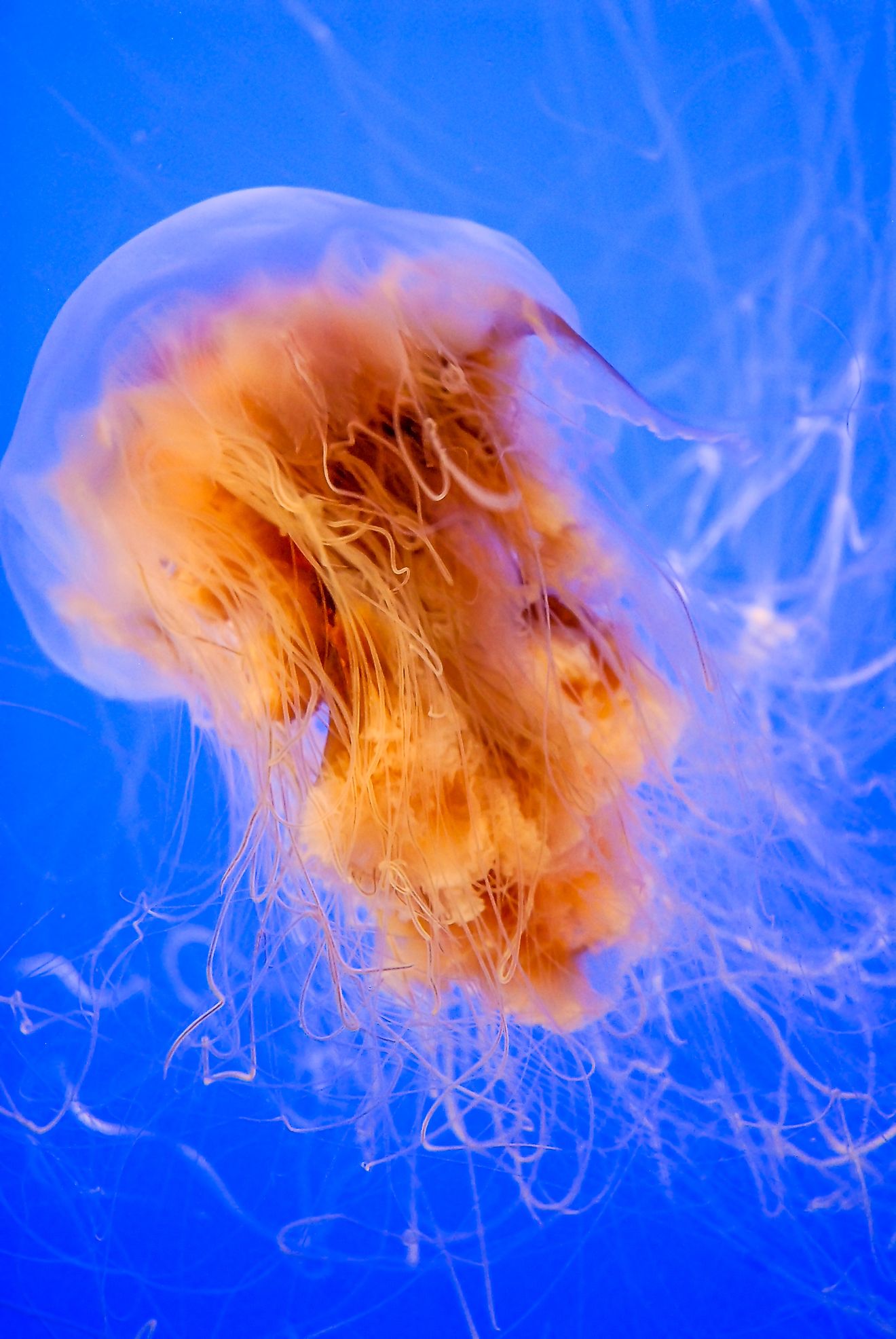Lion's Mane Jellyfish Facts: Animals of the Oceans

5. Physical Description
The Lion's Mane Jellyfish is an asexual, bell-shaped jellyfish species. They have red and yellow tentacles, with hues which are said to resemble the color of a lion’s mane. Colors of the larger lion's mane jellyfish individuals can range from bright red to dark purple, while smaller ones are more typically tan to orange. It has over 800 tentacles, which are divided into 8 groups, and these can reach over 98 feet (30 meters in length). The largest recorded lion's mane jellyfish had tentacles that reached 120 feet (36.6 meters). Its disc-shaped bell itself spans over 3 feet and, due to its tentacles, the lion's mane jellyfish is one of the longest animals in the world.
4. Diet
Zooplankton, small fish, moon jellyfish, small shrimp, copepods, ctenophores, and rotifers combine to form the staple diet of the lion's mane jellyfish. It is an opportunistic carnivore and, to catch its prey, it entangles them with the powerful stings on its netted tentacles. Large Lion's Mane Jellyfish have few natural predators, due to their size and the abundance of stinging tentacles they possess. However, the smaller ones may be preyed upon by large fish, sea birds, and sea turtles. Interestingly, the Leatherback sea turtle feeds on almost nothing other than jellyfish species.
3. Habitat and Range
The prime habitat of the lion's mane jellyfishes is to be found in the deeper coastal waters and oceans of North America and Scandinavia. The cold waters of the Arctic, Northern Atlantic, and Northern Pacific Oceans prove ideal for the lion's mane jellyfish. According to BioExpendition research, it also thought to live in warmer ocean waters around Australia and New Zealand. The lion's mane jellyfish is not considered to be under threat, though its population has not been analyzed by the International Union for Conservation of Nature's Red List of Threatened Species.
2. Behavior
the Lion's Mane Jellyfish glides vertically to move around within the water. It only moves horizontally depending on the wind and water currents. Unlike other jellyfish species, the lion's mane often lives far from the shore. Towards the end of their lifespans as they become less resilient, however, they will move into shallow waters in order to avoid rowdy ocean currents. The lion's mane jellyfish is known to have symbiotic relationships with other ocean creatures. It may give those small creatures not sensitive to its poison protection, as they nibble on leftover foods found on its tentacles. They are known to give powerful stings to human swimmers who encounter them, though these are not fatal.
1. Reproduction
Reproduction for a lion's mane jellyfish may be either sexual or asexual, according to Bio-Expendition. It carries both eggs and sperm, and doesn’t require a mate to procreate. Summer and autumn is when their young ones emerge. These have high mortality rates, and less than half of them survive. The life cycle of a lion's mane jelly fish has four stages. The female jellyfish takes its fertilized eggs on its tentacles and they develop into "larvae". When they mature, they are deposited onto a hard surface and become "polyps". By asexual production, polyps form small stacks of creatures called "ephyraes". These epyraes separate into individuals, who then grow into their "medusa" stage, from where they will grow to become adults. The lion's mane jellyfishes' lifespans are around a year in length.











